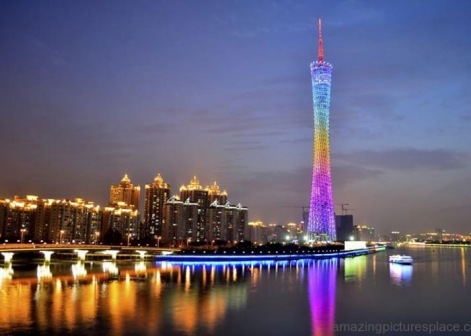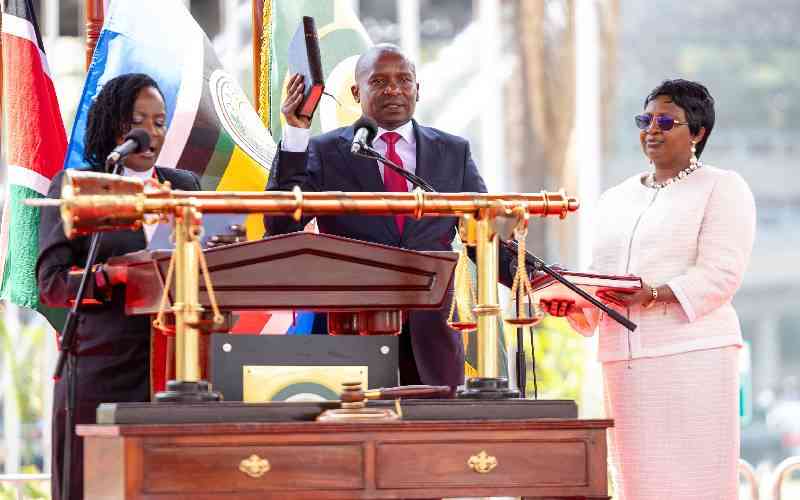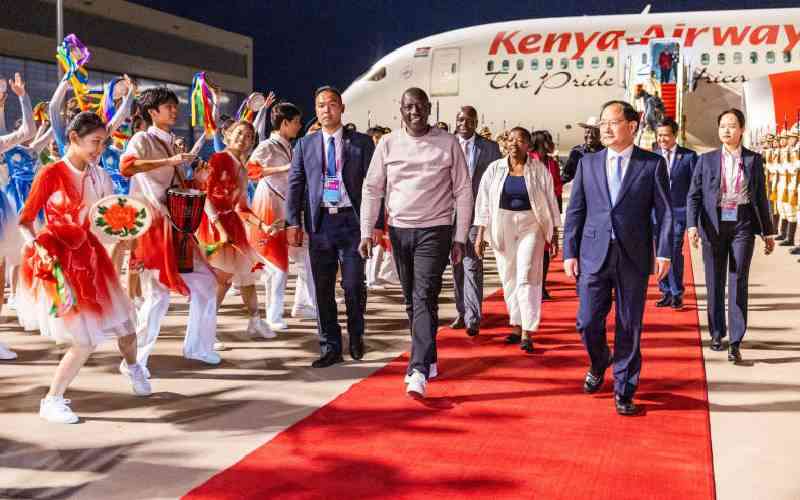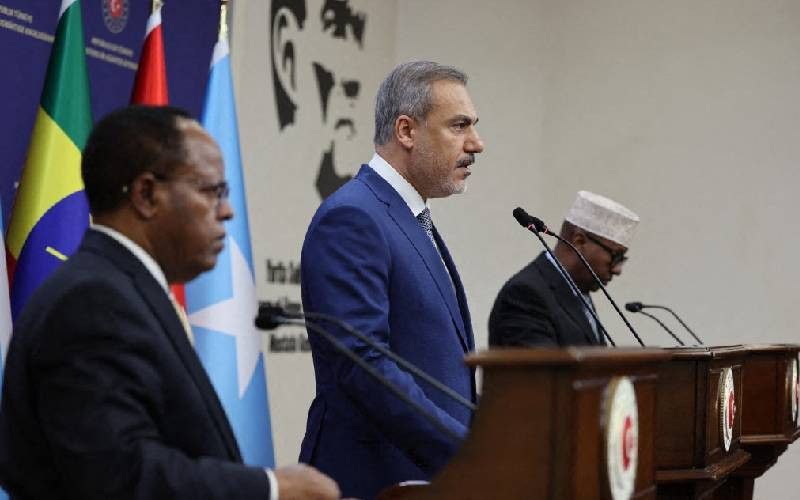
For most visitors, Guangzhou China is simply a gateway to affordable purchases for later resale. Only a handful of people venture more than a few kilometres past the Baiyun Airport into the city and to the scenic Pearl River for a late night cruise.
Pearl River is China's third longest river flowing over 2,400 kilometres and the second largest in volume. Its name, Pearl River, only refers to the section flowing through Guangzhou after a rocky island in the river, which has been smoothened by the flowing water over time.
The island appears as a giant pearl in the river hence the name Pearl River. That is just but one of the myths explaining how the river got its name.
Standing on the banks of the river are some of the most luxurious hotels and skyscrapers in Guangzhou.
Taking the famous 60-minute Pearl River cruise allows the tourists to watch the exquisite landscapes offered by Guangzhou. When I got on the boat for the cruise, my translator bought a ticket worth 50 Yuan (Sh875) that guaranteed a seat on the deck. The price of tickets varies depending on the type of service tourists want.
The view was particularly enthralling at night when the architectural complexes were lit by the neon lights forming an awe-inspiring reflection on the river. Boats full of passengers cruised from West to East under the colourful bridges with light fixtures and beautifully-lit buildings on shore.
Lights are choreographed to give uniform colour patterns in their displays - more of a hypnotic dancing of lights.
One of the most captivating buildings I saw during the cruise was the Guangzhou Tower located 125 metres off the banks of the river. The majestic tower stands at 600 metres on the southern part, making it one of the tallest buildings in the world.
Inside the tower are revolving restaurants, media facilities, a variety of shops and an outdoor rooftop observatory. It is said that the architect who designed the building was inspired by the bones of a female hip joint, hence the slim stature of the building in the middle.
According to touring companies in China, the Guangzhou Tower is the largest infrastructure project that is both a tourist attraction site and a television broadcast building.
From the deck, one is able to observe the frequent colour changes displayed by the skyscrapper. The lighting design is controlled individually by over 700 Light Emitting Diodes (LEDs) running from top to the bottom of the building.
After the two-hour cruise, seeing the city and fascinating architectural designs, we head to Dongjiang Hongxing Seafood Restaurant. Dongjiang, I am told, is one of the best seafood restaurants in the city. It is right in front of Pearl River.
The restaurant is conspicuously located just opposite the Pearl River. It is the only one of its kind within the area surrounded by other small modest restaurants.
Among the restaurant's attractions are the many aquariums that are home to sea cucumber, large oysters, elvers (small edible eels), and a variety of edible water beetles.
Tourists from all walks of life stream into the restaurant and walk by the aquariums to place orders and go wait as the food is prepared.
The restaurant offers a totally different panorama. The hot and humid atmosphere changes into a big breezy room with attendants at patrons' beck and call.
Once settled, as tradition would have it, we are offered tea. It is not the normal tea we are used to locally but has a cerise colour – if it was not steaming one would mistake it for red wine.
This is flower tea, just one type of tea among hundreds found in China. It is what they serve in all restaurants.
Unlike Kenya, they do not offer serviettes for free; waitresses bring them around just before meals for sales together with chop sticks.
During meals, one is drawn to the different boats ferrying passengers across the river and two of the lit bridges.
I enjoyed a mouth-watering meal of fried rice with prawns, pork and vegetables - a meal chosen by my translator.
The other restaurant we visited is called Hunan Restaurant, famous for the lotus root that is only available once a year.
Lotus root is white with creamy white flesh etched with air pockets. The root is crunchy but a bit more tender when younger. It is fried after soaking in vinegar to give it flavour and dressed in largely chopped chili peppers and garlic.
It is considered to be a good source of energy as it is high in carbohydrates and low in fat and protein.
The root is prepared differently in the restaurants around, depending on the culture and preferences of customers.
China, like other Asian countries, boasts old Chinese medicine that uses jars. This is not an experience to miss during a trip to Asia.
Also called Cupping Therapy, old Chinese medicine involves drawing skin, mainly from the back into the cup or jar by use of a vacuum.
After around 15 minutes, the cups are removed. The Chinese believe that it helps in treating pain, promoting relaxation, boosting skin health and ridding the body of any toxins. The darker the circles, the more the toxins present.
This ancient therapy has been part of the culture for over 3,000 years. Traditionally, Chinese healers used horns, shells and bamboo stems to cup the skin.
Although not scientifically proven to be effective, most of the people who have undergone it found it to be immensely helpful.
I decided to try it out in one of the local spas but by the third cup, I was writhing in pain and decided that I had had enough. The spa offered other types of massages, including acupuncture and fish pedicures. On top of these services, after paying, you are offered free meals for 24 hours since entry.
Those seeking to do a bit of shopping can visit the Guangzhou textile market and the up-market designer shops in the city.
There are a number of airlines that offer transport to Guangzhou. Kenya Airways, Turkish Airlines, Ethiopian Airlines and China Southern are some of the airlines that one can choose from among many more.
It is important to get a translator after travelling because the main problem faced by tourists is language barrier since only a handful of people speak English in the region.
The real treat in travelling is experiencing the culture at your place of destination.
 The Standard Group Plc is a
multi-media organization with investments in media platforms spanning newspaper
print operations, television, radio broadcasting, digital and online services. The
Standard Group is recognized as a leading multi-media house in Kenya with a key
influence in matters of national and international interest.
The Standard Group Plc is a
multi-media organization with investments in media platforms spanning newspaper
print operations, television, radio broadcasting, digital and online services. The
Standard Group is recognized as a leading multi-media house in Kenya with a key
influence in matters of national and international interest.
 The Standard Group Plc is a
multi-media organization with investments in media platforms spanning newspaper
print operations, television, radio broadcasting, digital and online services. The
Standard Group is recognized as a leading multi-media house in Kenya with a key
influence in matters of national and international interest.
The Standard Group Plc is a
multi-media organization with investments in media platforms spanning newspaper
print operations, television, radio broadcasting, digital and online services. The
Standard Group is recognized as a leading multi-media house in Kenya with a key
influence in matters of national and international interest.









